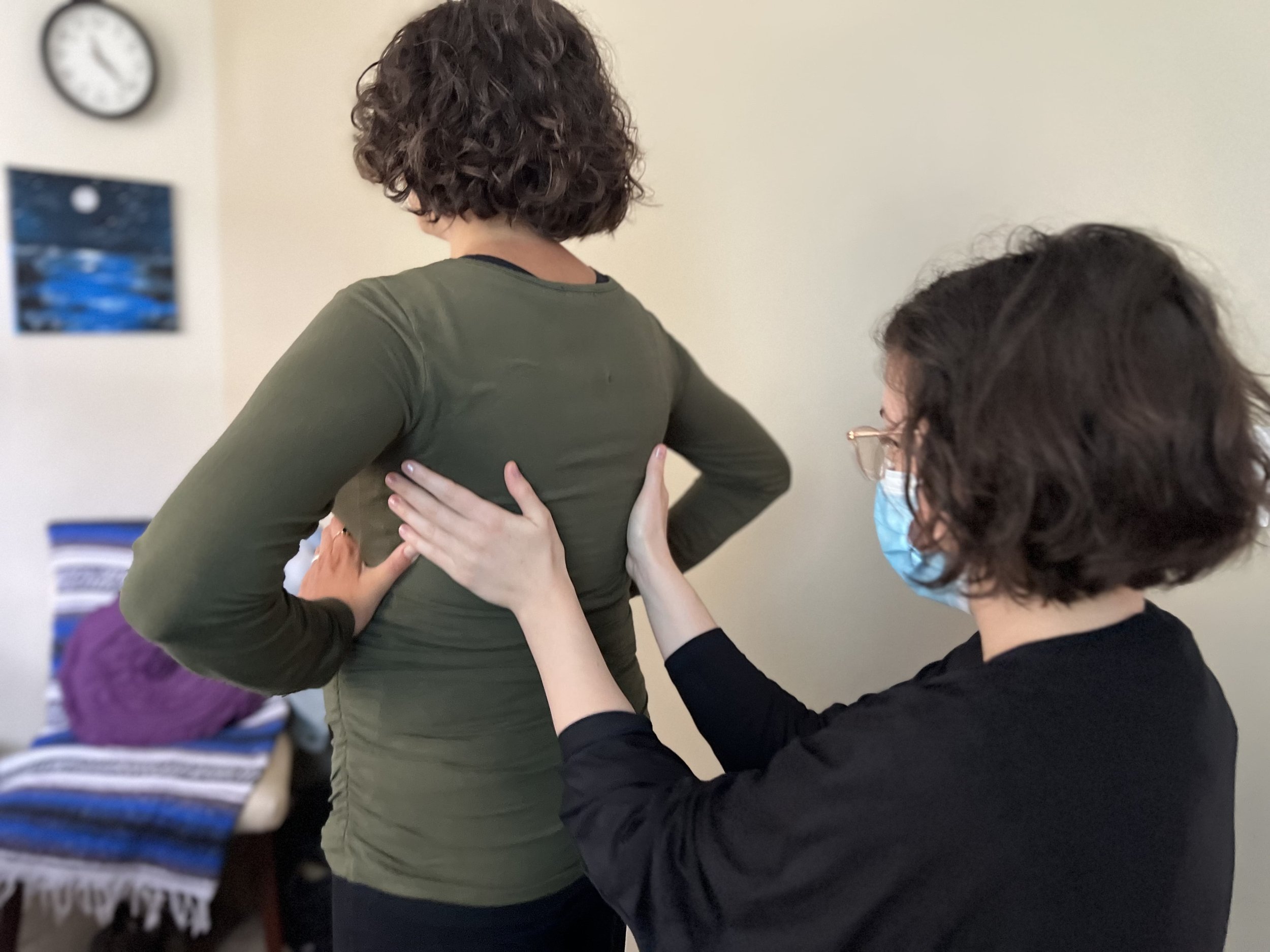Top 5 Prenatal Pelvic Floor Exercises to Include in Your Routine
Authored by Dr. Maryssa Steffen, PT, DPT, Board-certified Pelvic Health Clinical Specialist
What is the importance of pelvic floor exercises during pregnancy?
“The biggest risk factor for urinary incontinence later in life is urinary incontinence during pregnancy.” (Hage-Fransen, Monique A H et al. “Pregnancy- and obstetric-related risk factors for urinary incontinence, fecal incontinence, or pelvic organ prolapse later in life: A systematic review and meta-analysis” (2021).
If you are pregnant and you experience urine leakage while coughing, it can be caused by a few factors:
There may be too much pressure from above your bladder and the extra pressure from your cough stresses your urinary sphincter, and you leak.
What causes too much pressure from above the bladder?
Being pregnant….
Also, unsustainable posture habits. This can include prolonged computer work, adaptive responses to stress by holding tension in your neck and shoulders, and adaptive postural changes from previous pregnancies and carrying for babies and toddlers.
For example, when your head is repetitively forward and your shoulders are often tense, it reduces the performance of your abdominal muscles.
As a result, your pelvic floor and bladder are feeling the weight of your head, without the support from your abdominal muscles and most of the strain transfers to your pelvic floor.
So, if this is your situation, and you know that you are already working on your posture, then imagine how a cough adds even more pressure to your pelvic floor and sphincters. The forceful pressure can cause urinary leakage during a cough.
Besides managing pressure from above your pelvic floor with postural muscles training, you may also need pelvic floor strengthening if you are not sufficiently closing your urinary sphincter during a cough.
What are the benefits of strengthening your pelvic floor during pregnancy with prenatal therapy?
“Pelvic floor muscle training during pregnancy proves to be an effective preventative intervention for reducing the risk of urinary incontinence and the occurrence of third- or fourth-degree perineal tears.” (Zhang D, et al. Influence of pelvic floor muscle training alone or as part of a general physical activity program during pregnancy on urinary incontinence, episiotomy and third- or fourth-degree perineal tear: Systematic review and meta-analysis of randomized clinical trials. Acta Obstet Gynecol Scand. 2024.
Top 5 exercises for a stronger pelvic floor before and after birth:
Diaphragmatic breathing:
Place your hands on the sides of your lowest ribs and watch yourself in the mirror as you take easy breaths. Gently breathe into your hands and relax your shoulders. Let your exhale be easy and elongate so it is longer than your inhale.
2. Modified child’s pose
Use a bolster, a rolled up blanket, or a big yoga ball to support your upper body. Separate your knees so your belly has enough space. Rest here and breathe until you feel your pelvic floor relax. Muscles that can relax repeatedly have the potential to become stronger muscles.
3. Hands on wall squats
With your hands on the wall, and your feet a comfortable distance apart, feel your feet on the floor and breathe.
Elongate your spine and gently nod your chin down so you can see your sternum without moving your head down.
As you yield into your feet, sit back for an imaginary chair.
Pause and hold the effort as you breathe.
Push from your feet to return to stand.
Repeat.
Practice before fatigue.
You should be able to talk while doing this.
4. Continue your moderate intensity activity for about 30-40 minutes, 3 times a week, or more if you stop before fatigue.
If your OBGYN says it is safe to exercise, and you have been active before pregnancy and during your pregnancy this far, continue your practice with modifications and rest breaks. Walk as often as you can. You should be able to talk during exercise while pregnant. Swimming or water aerobics are also great to reduce swelling.
5. Prenatal pelvic floor exercises. Otherwise known as “kegels.”
When you stop your urine flow, notice what it feels like. It is not a good idea to practice this as an exercise, but it can be a way for you to be familiar with your pelvic floor and urinary sphincter.
When your bladder is empty and you have some focused time to practice pelvic floor exercises, tense your pelvic floor muscles while lying in a comfortable position.
Hold the tension while you breathe. Pelvic floor exercises are not helpful if you hold your breath.
You can hold the tension for as long as you can breathe while holding. Try humming or singing while you tense your pelvic floor muscles.
The hold may be up to 10 seconds, for example.
Relax your inner thighs and glutes when you tense your pelvic floor. Practice isolating your pelvic floor muscles as you coordinate the hold with your breath.
Your pelvis should not tilt if you are truly isolating your pelvic floor muscles.
Fully relax after the hold. This is the most important part of this process. Relax as if you are going to pee.
Repeat. Quality is more important than quantity. Stop the practice before fatigue onset.
Practice daily, up until your birth. It is safe to practice it again soon after delivery, or when your doctor says it is safe for you to do so.
How to stop urine leakage during a cough?
Before a sneeze, cough, laugh, or lift, tense your pelvic floor muscles one second before the pressure comes. This is like an abdominal brace to protect your back before lifting something heavy.
If you are in the state of California, book a discovery call to learn more about our pregnancy physical floor therapy. We offer Telehealth and in person visits. Our office is located in Oakland, CA.




